Motilla del Azuer: Impressive And Unusual 3,200-Year-Old Fortress
Ellen Lloyd - AncientPages.com - Motilla del Azuer is an impressive and unusual 3,200-year-old fortress in the Iberian Peninsula. Located in the central area of Spain called La Mancha, it was constructed during the Bronze Age and contains the oldest well found in the Iberian Peninsula.
The site of Motilla del Azuer can be found a few kilometers from the town of Daimiel (Ciudad Real), on the left bank of the Azuer River.

Left: Central tower; Right: Hydraulic structure located inside the fortification Image credit: Antiquity, Department of Archaeology, Durham University
The structures of Motilla del Azuer (connected with water management, and agricultural production) contains the oldest well known from the Iberian Peninsula and the archaeologists suspect that the walled enclosures were therefore used to protect and manage the livelihood of the people living in the settlement:
To secure the well’s water, to store and process cereals on a large scale, to occasionally keep the livestock, and to produce pottery and other domestic artifacts.

Arial view of La Motilla del Azuer site with the central fortification and the surrounding settlement. Image: artravelviajes.com
The ancient fortress Motilla del Azuer has a diameter of about 50 meters, and is composed of a tower, two walled enclosures and a large courtyard.
The core of the fortress is composed of a tower of masonry of square plan, with 7 meters high east and west fronts and an interior accessible through ramps inlaid in narrow corridors, which confer a particular nature to the place.
Access to the tower is by ramps located in narrow corridors.
Ruins of Motilla del Azuer. Image credit: artravelviajes.com
A small number of adults and children created their homes around the fortress and lived as community. The large amount of labour involved in the construction and maintenance of the impressive fortifications far exceeded the requirements of the social group that inhabited this type of settlements.
See also:
10 Ancient Fortresses Of Historical Importance
Los Millares – 5,000-Year-Old Advanced Copper City In Europe
The walls protected water, collected through the well. The well has been used throughout the different occupation phases of the settlement. It was also important to store and process cereals on a large scale, to keep the livestock occasionally and to product pottery and other home-made products, whose remains have also been found.
However, recent research shows that the "Motillas" were no burial mounds as it was previously thought. The funerary ritual usually involved individual inhumation in pits, occasionally covered with stonework or slabs. In some child burials the ritual makes use of pottery urns.
The bodies always appear in a flexed position and the sepulchres are normally placed next to the dwelling walls or near the outer line of fortification.
Grave goods are scarce and not very representative, although some adults have been found buried with pottery vessels and copper daggers or awls. Anthropological analyses inform us about the pathologies of this population, which were mostly infectious processes caused by nutritional stress and poor health conditions.
Written by - Ellen Lloyd – AncientPages.com
Copyright © AncientPages.com All rights reserved. This material may not be published, broadcast, rewritten or redistributed in whole or part without the express written permission of AncientPages.com
Expand for referencesMore From Ancient Pages
-
 Neanderthals: The Oldest Art In The World Wasn’t Made By Humans
Featured Stories | Jan 17, 2023
Neanderthals: The Oldest Art In The World Wasn’t Made By Humans
Featured Stories | Jan 17, 2023 -
 What Can Fossil Footprint Discoveries Tell Us About The Past?
Featured Stories | Aug 16, 2023
What Can Fossil Footprint Discoveries Tell Us About The Past?
Featured Stories | Aug 16, 2023 -
 On This Day In History: Battle Of Rhyndacus – Oct 15, 1211
News | Oct 15, 2016
On This Day In History: Battle Of Rhyndacus – Oct 15, 1211
News | Oct 15, 2016 -
 Why Did Ancient Romans Build So Many Straight Roads?
Ancient History Facts | Aug 9, 2017
Why Did Ancient Romans Build So Many Straight Roads?
Ancient History Facts | Aug 9, 2017 -
 Ah Puch: Evil Death God Of Underworld Who Hated Souls In Maya Beliefs
Featured Stories | Feb 16, 2018
Ah Puch: Evil Death God Of Underworld Who Hated Souls In Maya Beliefs
Featured Stories | Feb 16, 2018 -
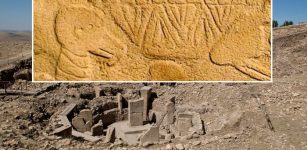 World’s Oldest Lunisolar Calendar May Have Been Discovered At Göbekli Tepe, Turkey
Archaeology | Aug 7, 2024
World’s Oldest Lunisolar Calendar May Have Been Discovered At Göbekli Tepe, Turkey
Archaeology | Aug 7, 2024 -
 Mysterious Megaliths Of Russia May Offer Evidence Of An Ancient Advanced Lost Civilization
Ancient Technology | Jul 22, 2017
Mysterious Megaliths Of Russia May Offer Evidence Of An Ancient Advanced Lost Civilization
Ancient Technology | Jul 22, 2017 -
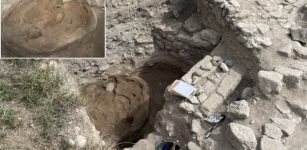 3,700-Year-Old Domed Oven Found At Troy Excavation Site Closely Related To Anatolian Culture
Archaeology | Sep 12, 2022
3,700-Year-Old Domed Oven Found At Troy Excavation Site Closely Related To Anatolian Culture
Archaeology | Sep 12, 2022 -
 Ancient Syriac Epitaphs Discovered In Tomb Of Priest Monoha Shed New Light On The Assyrian Empire
Archaeology | Dec 23, 2019
Ancient Syriac Epitaphs Discovered In Tomb Of Priest Monoha Shed New Light On The Assyrian Empire
Archaeology | Dec 23, 2019 -
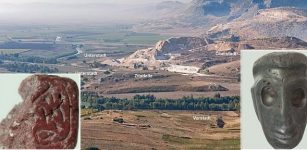 Bronze Age And Iron Age City Complex Once Known As Kummanni Unearthed In Turkey
Archaeology | Dec 4, 2018
Bronze Age And Iron Age City Complex Once Known As Kummanni Unearthed In Turkey
Archaeology | Dec 4, 2018 -
 Sunken Land Of Lyonesse: Legendary Kingdom That Influenced Stories Of Writers And Fishermen
Featured Stories | Mar 16, 2017
Sunken Land Of Lyonesse: Legendary Kingdom That Influenced Stories Of Writers And Fishermen
Featured Stories | Mar 16, 2017 -
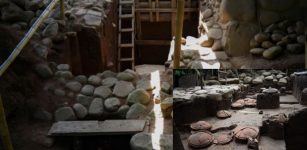 2,000-Year-Old Stela And ‘Laboratory’ Of Early Maya Writing Found In Guatemala
Archaeology | Mar 15, 2020
2,000-Year-Old Stela And ‘Laboratory’ Of Early Maya Writing Found In Guatemala
Archaeology | Mar 15, 2020 -
 Archaeologists Unearthed Alabaster Statue Of Queen Tiye In Luxor, Egypt
Archaeology | Mar 24, 2017
Archaeologists Unearthed Alabaster Statue Of Queen Tiye In Luxor, Egypt
Archaeology | Mar 24, 2017 -
 Unorthodox Ancient ‘Out-Of-This World’ Carvings Were Found And Destroyed – Discovery – Part 1
Ancient Mysteries | Aug 10, 2020
Unorthodox Ancient ‘Out-Of-This World’ Carvings Were Found And Destroyed – Discovery – Part 1
Ancient Mysteries | Aug 10, 2020 -
 Controversial Study Of Ancient DNA Could Re-Write History Of South Florida And Prove Humans And Huge Prehistoric Animals Co-Existed
Archaeology | Sep 23, 2014
Controversial Study Of Ancient DNA Could Re-Write History Of South Florida And Prove Humans And Huge Prehistoric Animals Co-Existed
Archaeology | Sep 23, 2014 -
 New Fossil Link In Bird Evolution Discovered
Evolution | Sep 7, 2023
New Fossil Link In Bird Evolution Discovered
Evolution | Sep 7, 2023 -
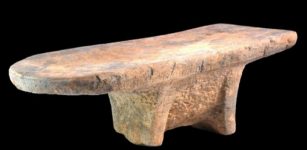 Evidence Of A 2,000-Year-Old Curry, The Oldest Ever Found In Southeast Asia
Featured Stories | Jul 25, 2023
Evidence Of A 2,000-Year-Old Curry, The Oldest Ever Found In Southeast Asia
Featured Stories | Jul 25, 2023 -
 Gold Spiral In Early Bronze Age Grave – Unearthed
Archaeology | Jun 1, 2021
Gold Spiral In Early Bronze Age Grave – Unearthed
Archaeology | Jun 1, 2021 -
 Lost Since 1362: Researchers Discover The Church Of Rungholt – A Sunken Medieval Trading Place
Archaeology | May 25, 2023
Lost Since 1362: Researchers Discover The Church Of Rungholt – A Sunken Medieval Trading Place
Archaeology | May 25, 2023 -
 On This Day In History: Aviator Amelia Earhart Was The First Woman To Cross The Atlantic By Air – On June 18, 1928
News | Jun 18, 2016
On This Day In History: Aviator Amelia Earhart Was The First Woman To Cross The Atlantic By Air – On June 18, 1928
News | Jun 18, 2016



